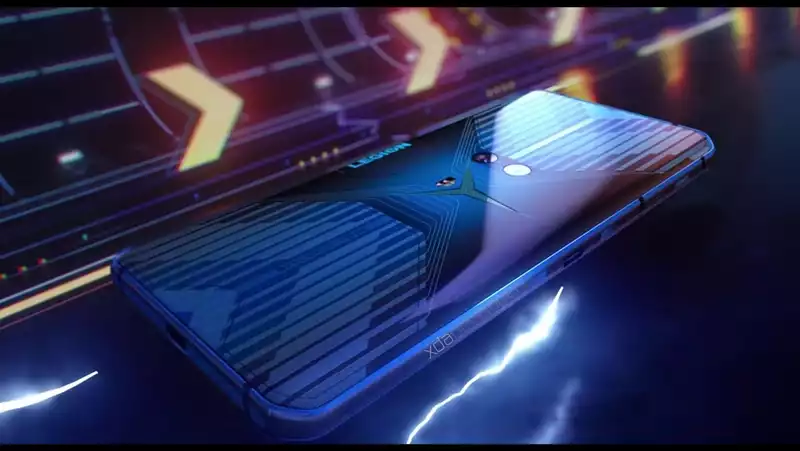Lenovo is working on a gaming phone to be launched under its Legion brand, featuring a side-mounted selfie camera, two USB-C ports, and 90W charging. Even if you're not an avid mobile gamer, these specs and features are likely to turn the heads of more conventional smartphone owners who are waiting for a phone like Samsung's Galaxy Note 20.
The phone was teased on Chinese social media, but XDA Developers has revealed the full specs of the phone through a reliable source.Lenovo already owns the Motorola brand, so it has experience making smartphones Lenovo already owns the Motorola brand and has experience making smartphones. So while these ideas may seem insane, there is engineering knowledge behind them.
What is immediately noticeable on the Legion phone is that the front-facing camera, while the familiar pop-up type, is actually located on the right side of the phone. This is to ensure that the camera is in the correct orientation when the phone is held horizontally, which would be ideal when streaming games from the phone or when one wants to change the angle of a video call.
This is part of Lenovo's aim to make the phone easier to use when held horizontally. This is also why the phone has two USB-C ports, one on the bottom edge as one would expect, and the other on the side opposite the camera, allowing charging with the cable without pinching your hand.
You won't need to charge it for that long; the Lenovo Legion phone uses a dual-cell battery system with a total capacity of 5,000 mAh. It can also be charged at 90W, and Lenovo expects it to complete charging in just 30 minutes from an empty state.
As for the display, the Legion has the same 144 Hz refresh rate as the rival gaming smartphone, the RedMagic 5G, produced by Chinese manufacturer Nubia. It is also said to be FHD quality, which is not as high resolution as the QHD displays of premium flagships like the Samsung Galaxy S20 and OnePlus 8 Pro, but should still look good thanks to the high refresh rate. The size of the display is unknown, but is expected to be around 6.6 inches.
Also specialized for gaming applications are the speakers and vibration motors. The stereo speakers are symmetrical, unlike many smartphones with dual speakers, where the top speaker is smaller than the bottom. As for vibration, Legion uses uEngine, a "symmetrical dual X-axis linear vibration motor. This should provide users with surprisingly effective tactile feedback from in-game events.
On the back, there will be two cameras: a 64MP main sensor and a 16MP ultra-wide sensor. The aforementioned side-mounted selfie camera is a 20MP sensor; the CPU is the ubiquitous Snapdragon 865 chip we have already seen in many flagships this year, with an unknown amount of LPDDR5 RAM, the latest and greatest standard for smartphone memory. The chip is equipped with an unknown amount of LPDDR5 RAM, the latest and greatest standard for smartphone memory.
We already know how Lenovo's smartphone compares to the Samsung Galaxy S20 and OnePlus 8 Pro, so it is worth looking at the next big premium Android smartphone, the Galaxy Note 20. Samsung's next flagship will certainly beat this Lenovo phone in terms of camera, and if it uses the QHD panel of the S20 series and has the useful S-Pen functionality of previous Note devices, it will have an advantage.
However, the Note 20 will likely have the same 120Hz refresh rate, 45W fast charging, and Snapdragon 865 CPU as the S20, so better performance and gaming capabilities will go to the Legion. However, it will be up to you to decide whether you prefer the Note 20's rumored punch-hole selfie camera notch over the Legion's side-facing pop-up camera.










Comments